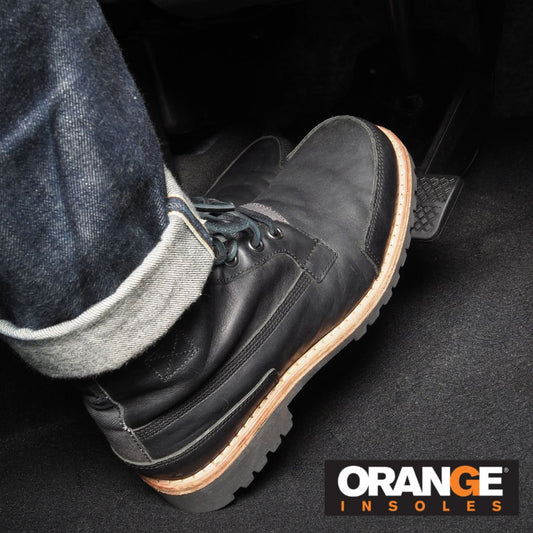Alignment refers to how the head, shoulders, spine, hips, knees, and ankles relate and line up with each other. When everything is properly aligned, think of a long, straight, well-paved road, everything moves quickly and easily. When something is misaligned, a sudden, sharp curve emerges or a deep dip, or a ton of twists and turns in the road, traffic slows and cars might start to crash and burn. And if one street gets backed up, cars start taking another and putting extra pressure and strain on the stretch. Soon, roads are worn down in some spots but not others.
Proper alignment keeps traffic moving. It puts less stress on the spine and prevents some muscles from overcompensating for others. Maintaining good posture helps keep you in alignment. It’s a pretty important cycle and can be broken when one link or section of road is off.
When your body is out of alignment, it might just be a pain at first. You might experience muscle aches or pinched nerves. But the longer you’re out of alignment the more damage is done.
Poor Alignment and Posture can lead to a number of issues:
- Headaches/Migraines
- Decreased mobility
- Sciatica
- Fatigue
- Discomfort
- Reduced range of motion
- and more
Spinal alignment doesn’t just cause sore muscles or painful symptoms, it can also impact your overall health. Those with misalignment of the spine might experience:
- Frequent illnesses
- Digestion issues
- Respiratory issues
- A slower metabolism
- Interrupted sleep
Given the impact of poor alignment, you don’t want to take any chances. First, test your alignment. If you think yours is off, follow some of the tips below and make sure to see a chiropractor or medical practitioner.
Causes of Misalignment
What causes your body to get out of alignment in the first place? You might be thinking, “I don’t do sports or put a lot of pressure on my body, I’m fine.” But sometimes, depending on a number of factors, stepping off a curb wrong and jolting our knee or hip wrong, can push us out of alignment. And while the effects may not be felt right away, your body will start to shift. Here are a few things that can cause misalignment, some you probably experience every day.
A Sedentary Lifestyle: Prolonged sitting or lack of physical activity can weaken the muscles and disrupt the natural alignment of the body. Insufficient movement can lead to muscular imbalances and postural issues.
Tip: Get a standing desk for work or make sure to move for 3 minutes every 30 to 60 minutes
Poor Ergonomics: An incorrect workstation setup at the office, improper lifting techniques when working out, poorly fitting shoes – all of these things can place your body in unnatural positions, leading to misalignment over time.
Tip: Follow the tips laid out here to make sure you have proper posture when working at your desk
Bonus tip: Make sure your shoes fit properly and if you need extra support (almost all of us do!) add an insole to work or workout shoes to help keep your foundation stable while exerting yourself
Weak Core Muscles: The core muscles play a crucial role in maintaining proper alignment. Weak core muscles can result from a sedentary lifestyle, a lack of exercise, or just not enough focus on that area of the body. Many people with poor posture actually have a weak core or back, leading to instability and misalignment.
Tip: Practice Plank Pose
Hold this pose to work on building strength in your core and upper body. Follow the tips below to get started.
- Your hips shouldn't be too high or sagging too low. You should be able to make a diagonal line from the crown of your head to your heels.
- To get into plank pose, come to your hands and knees with your shoulders directly over your wrists. Tuck your toes under and straighten your legs.
- If you're a beginner, you can drop your knees to the floor as you build strength. Hold the pose for as long as you can while breathing evenly.
Trauma or Injury: Accidents, falls, sports injuries, or repetitive strain injuries can cause sudden or gradual misalignment of the body. These events may result in muscle imbalances, joint misalignment, or postural issues.
Tip: Don’t ignore pain. Some soreness is normal, but if you’re feeling consistent or sharp pain, see your doctor.
How to Fix Your Alignment
Go to the chiropractor or doctor: When working to fix your alignment, you’ll want to start with a clean slate. Visit a chiropractor or your doctor and they’ll be able to examine you and then adjust you. They’ll also be able to tell which areas of your body might be weak and where specifically you need to target when realigning.
Tip: This is not medical advice. You should visit the practitioner you feel most comfortable with and do your research before visiting someone new.
Do Yoga: Yoga is a great, gentle way to get your body back in alignment. There are a number of specific poses that can help, including downward dog.
A staple of any Yoga practice, downward dog is considered both an inversion and extension and it builds strength in the arms, core, and back of the legs.
To get into downward dog, start in child's pose. From here, make sure your feet are a hips-width distance apart, curl your toes under, and as you exhale, straighten both your legs, shift your hips back and left your armpits and your belly. Try to make your rib cage touch your thighs. Stay here for a few breaths.
You can find more helpful, alignment poses here.
Fix your posture: We’ve already mentioned that posture and alignment are connected and you can start to introduce better posture into your daily life by following these tips:
- Remember, head over heart, heart over pelvis
- Pull your shoulders back and your shoulder blades together
- Keep your core tight throughout the day (imagine pulling your belly button up and back toward your spine)
- Keep your screens at eye level as often as possible (avoid text neck!)
- Maintain proper posture at your desk and even when working from home
Use Insoles: Sometimes our favorite shoes don’t offer a whole lot of support. But if you’re walking around with no support all day, your body is going to feel it. As you're working to rebuild your alignment, adding an insole to your shoes can help keep your feet stable and help you start to improve your gait. Because if you overpronate or walk with your feet out, you are most certainly impacting your alignment.
Strengthening Exercises: Doing strengthening exercises can help build your muscles in order to support your frame. It’s important to work each side equally, especially if you are experiencing imbalances from side to side. Try these strengthening exercises to maintain alignment.
- Bridge Pose
- Plank Pose
- Squats
- Bird dog
- Find more exercises here!
Realigning a body that is out of alignment might take some time and perseverance, but it’s definitely not an endeavor you want to skimp on. If you’re experiencing pain you can’t explain, sore muscles, or headaches, start with your foundation. Make sure you’re supported from the ground up and that you’re finding balance at work, home, and at play.

























































